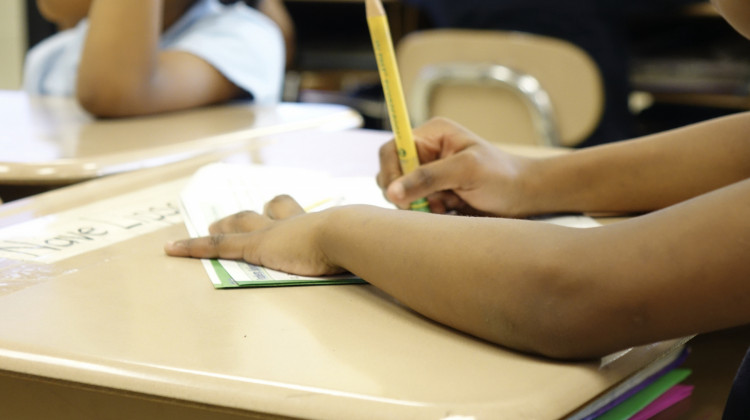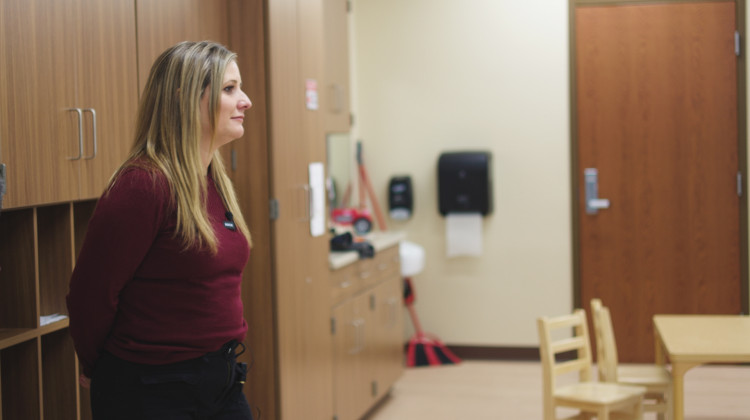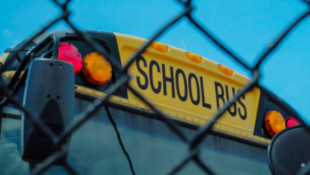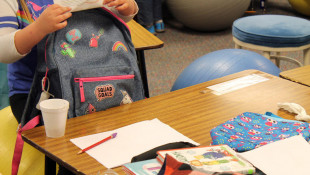Providing all Marion County students with equitable access to education has been a challenge for years, and a new report finds that Black and Hispanic students lack access to high-quality education — from birth through higher education — at disproportionate rates.
According to the report, only 7 percent of schools in predominantly non-White neighborhoods are performing above the state average on state exams. But 47 percent of schools in primarily White neighborhoods are performing above the state testing average.
The report was commissioned by the Richard M. Fairbanks Foundation to help aid Marion County school districts in their “No Racism Zone” initiative that was announced on June 19, 2020. The initiative was partially in response to the death of George Floyd, a Black man killed by a police officer in Minneapolis.
In a press release, president and CEO of the Richard M. Fairbanks Foundation Claire Fiddian-Green said the community needs to examine its education, workforce development and social support systems in order to address these education gaps.
“Ensuring every student in Marion County has equal opportunity to access a high-quality education is critical to ensuring the vibrancy of our community,” Fiddian-Green said. “That’s why we must urgently take action to bolster supports for Black and Hispanic students, drawing from evidence-based solutions.”
Disparities for K-12 students
The report uses data from students enrolled in the 11 Marion County public school districts — totaling more than 135,000 students — as well as charter and private schools. It outlines disparities based on race during early childhood and K-12 education, as well as school discipline rates, college readiness and enrollment, and post-secondary success.
According to the findings, Black and Hispanic K-12 students are less likely to have access to high-performing schools and teachers with at least four years of experience. Seventy-two percent of Black students and 70 percent of Hispanic students currently attend low-performing schools. This is compared to 15 percent of Asian students and 36 percent of White students.
And teachers are predominately White, even though the student population is not — 82 percent of Marion County teachers are White, even though the White student population is only 34 percent.
Independent consultant Ben Kleban, who conducted the report, said a lack of teachers of color or teachers with experience can contribute to achievement gaps.
“The research is pretty clear that students of color tend to experience better outcomes when they have teachers who look like them and school leaders who look like them,” Kleban said. “And given the tremendous gap in the demographics of the current school staff in Marion County and the students they serve, that's a clear opportunity for improvement.”
The report also found that learning gaps increased during the COVID-19 pandemic when students were forced to learn remotely. In 2019, White students in grades 3-8 performed 2.8 times higher on their math and English Language Arts ILEARN exams than Black and Hispanic students. In 2021, it was 4.1 times higher.
Potential solutions
Although the report said that Marion County districts’ “No Racism Zone” initiative was a “meaningful first step,” Kleban said districts can still do more.
The report includes four main suggestions for school leaders to address disparities among K-12 students:
- Identify and prioritize high-quality education in neighborhoods of color that have low-performing schools.
- Allocate federal COVID-19 funding to support students whose performance was impacted by the pandemic.
- Implement automatic enrollment policies for advanced coursework.
- Develop new recruitment and retention programs for teachers and administrators of color.
Some school districts, such as the Indianapolis Public Schools district, have warned the community of a potential financial crisis. Although some of these suggestions will cost money, Kleban said districts should be able to make most of these changes.
“I think if you really look at the list, I don't think that any individual intervention that's recommended is financially overwhelming, relative to the total budget of the district or the state even,” Kleban said.
The report also suggests having more collaborations across school districts in the county that include leaders of the county’s charter schools, early childhood education programs and postsecondary institutions.
The Richard M. Fairbanks Foundation is among the financial supporters of initiatives based at WFYI.
Contact WFYI education reporter Elizabeth Gabriel at egabriel@wfyi.org. Follow on Twitter: @_elizabethgabs.
 DONATE
DONATE






 View More Articles
View More Articles



 Support WFYI. We can't do it without you.
Support WFYI. We can't do it without you.